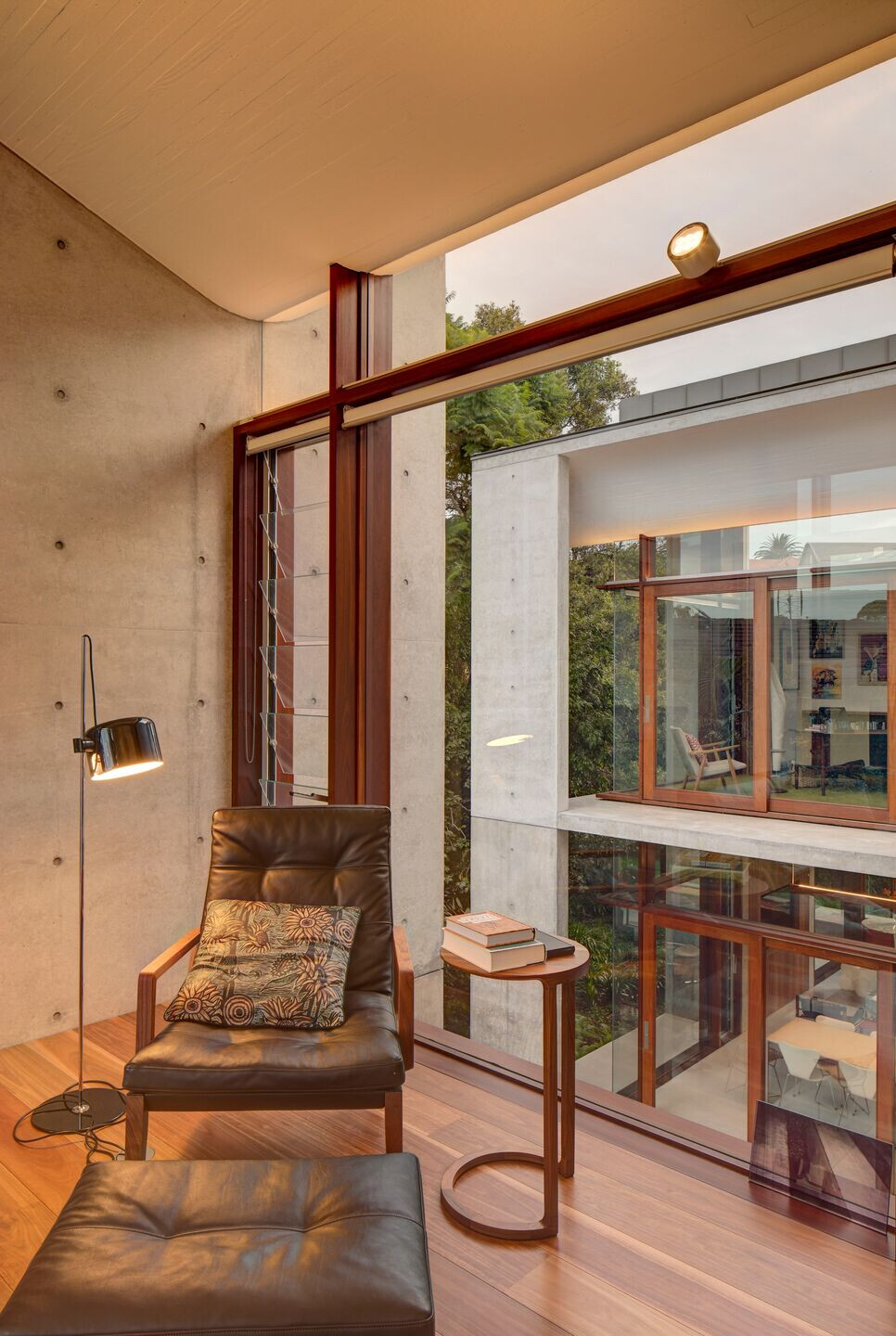Down on the flat sand plain at the base of the Balmoral rock escarpment, a new house is slotted into the established garden that our client wished to keep and develop further as part of the overall concept for their property.

The house is organised along a central circulation spine, punctuated by a frangipane tree at one end, and a contemporary Australian sculpture at the other. From within, its room-forms ‘press’ out into the landscape setting. The perimeter of the house is extended by a series of courtyards which disintegrate the otherwise pure form of the building. These extended areas draw the sun deep into the plan throughout the duration of the day, answering our client’s wish for abundant natural light on a site that is enclosed by nine other dwellings.

Our clients have a deep interest in painting, sculpture and installation. They requested that we design the house first and foremost, as a piece of architecture, that would then serve to accommodate and compliment the art collection they had accumulated over three decades.

The house has been built for longevity and sustainability. All cost decisions were based on the selection of materials with the longest life span, and building systems (heating, cooling etc.) with the lowest energy consumption. With such permanence and longevity in mind, we designed the house in generous slabs and curves of in-situ concrete with timber and glass infill.

Above the assemblage of vertically and horizontally interconnected spaces, an undulating concrete ceiling hovers – its convex and concave curves seeming to respond to the alternating spaces below. The undulations are also expressed in the sculptural roof exterior, its concrete mass supported at the apex of the undulation, giving the sense that the roof is draped over the house.

The ceiling form exhibits the wondrous plasticity of concrete, while the slatted timber formwork patterning offers texture and surface detail. Whilst the house is made of monolithic concrete, the form is dissolved in places to draw natural light into selected parts of the interior and allow vistas throughout.

A series of orthogonal timber forms sit inside the concrete shell, easing the more functional requirements of the house, as well as establishing a more detailed, domestic scale. This timber form then ‘leaves’ the house transitioning to become the entry screen and taking on a more exuberant character – as if in counterpoint to the calm concrete ceiling glimpsed from the street.













































